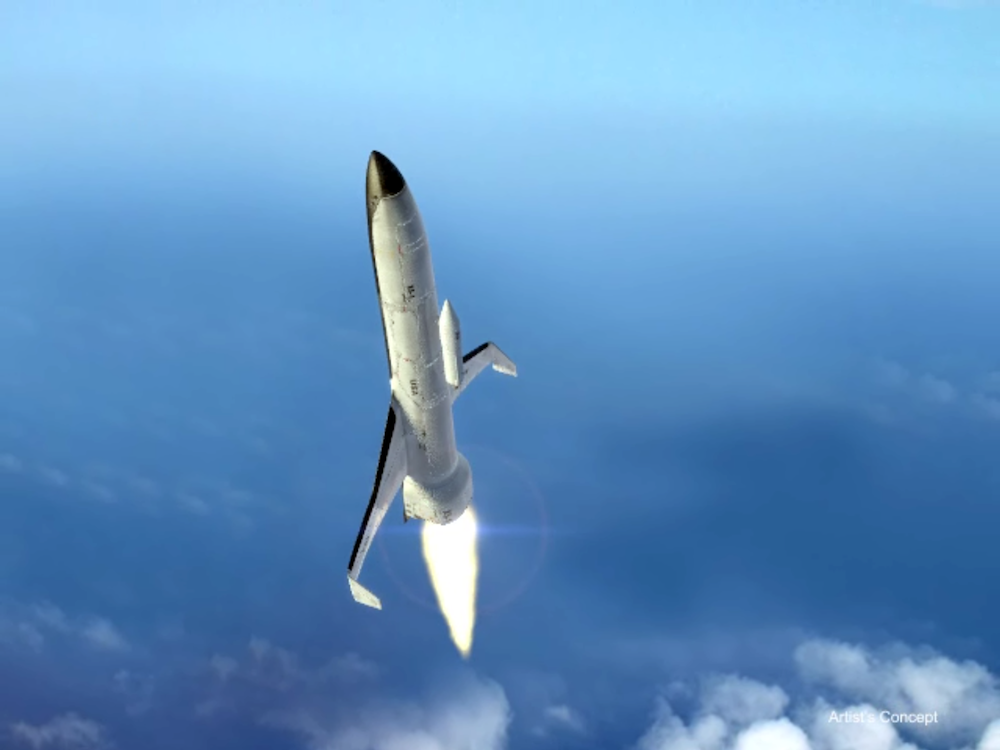Military's Space Plane Program Eyes Future Hypersonic Flight

A new unmanned military space plane is being developed to launch small satellites into orbit and serve as a test bed for a futuristic fleet of hypersonic vehicles.
The Defense Advanced Research Projects Agency (DARPA), the government agency responsible for developing new military technologies, announced today (July 15) that it is moving forward with its latest high-tech project, the Experimental Spaceplane (XS-1) program.
The agency has awarded funding to three companies — Boeing, Masten Space Systems and Northrop Grumman — to develop a reusable unmanned vehicle capable of providing "aircraftlike access to space." [Humanoid Robots to Flying Cars: 10 Coolest DARPA Projects]
"We're eager to see how their initial designs envision making spaceflight commonplace — with all the potential military, civilian and commercial benefits that capability would provide," Jess Sponable, program manager for DARPA's Tactical Technology Office, said in a statement.
DARPA envisions a space plane made up of several different components, or stages, designed to perform specific functions at different altitudes. The first stage of the vehicle should reach hypersonic speeds of more than five times the speed of sound before reaching orbit, DARPA officials said.
Once this reusable first component reaches its maximum altitude, it will be able to release several other component parts into space, such as a small satellite, before returning to Earth.
The agency outlined a list of key milestones for the design process, including the following:
Sign up for the Live Science daily newsletter now
Get the world’s most fascinating discoveries delivered straight to your inbox.
- Flying 10 times in 10 days
- Flying to Mach 10 (10 times the speed of sound) at least once
- Launching a small payload into orbit
If DARPA's space plane program is successful, it could result in the production of a new type of unmanned orbital vehicle. The Air Force already has two X-37B space planes, one of which has been orbiting Earth for more than 500 days.
However, one of the major goals of the DARPA space plane program is to decrease both the developmental and operational costs associated with these high-tech vehicles. One of the agency’s objectives is to launch a relatively small payload — for instance, a satellite that is 3,000 to 5,000 lbs. (1,360 to 2,270 kilograms) — into space, for less than $5 million.
DARPA's focus on developing aircraft with extraordinary technical capabilities is not limited to the XS-1 program. The agency also recently awarded contracts to four companies (including Boeing), to develop an experimental unmanned vehicle for its Vertical Takeoff and Landing (VTOL) X-Plane program.
The VTOL program, as the name implies, aims to develop a plane with the ability to take off and land vertically. Such a plane would also have increased hovering capabilities and be able to reach speeds of up to 460 mph (740 km/h).
In addition to its experimental aircraft programs, DARPA is working on developing new materials for use in hypersonic technologies. The agency announced last week that it will be accelerating its Materials Development for Platforms (MDP) program, with the goal of cutting the time it takes to develop and test new materials from an average of 10 years to an average of just two-and-a-half years.
The initial test case for the accelerated MDP program, DARPA said, will be a platform that could be used to build an aerodynamic shell for hypersonic vehicles. The materials developed for these futuristic fliers must be able to withstand temperatures of several thousand degrees Fahrenheit (more than 1,000 degrees Celsius), which is hot enough to melt steel, according to DARPA.
While the development of new hypersonic materials may sound like an insurmountable challenge, the agency has experimented with such vehicles before. In 2013, DARPA teamed up with the U.S. Air Force to develop a new vehicle that built upon the Air Force's successful X-51A Waverider program. The X51-A was able to reach speeds of Mach 5.1 (more than five times the speed of sound).
Follow Elizabeth Palermo on Twitter @techEpalermo, Facebook or Google+. Follow Live Science @livescience. We're also on Facebook & Google+. Original article on Live Science.

Elizabeth is a former Live Science associate editor and current director of audience development at the Chamber of Commerce. She graduated with a bachelor of arts degree from George Washington University. Elizabeth has traveled throughout the Americas, studying political systems and indigenous cultures and teaching English to students of all ages.









